Stumped by some confusing words on a recipe? This Ultimate Baking Glossary has a searchable table of common baking terms listed in alphabetical order.
From blind baking to macaronage, there is a wide variety of baking terms that you should know to follow any recipe with ease.
So, I compiled together this ultimate baking glossary to list all the most common baking terms in one place. To make things easier for you, I have listed the terms in alphabetical order, and you can search for any term in particular with the search bar in the top righthand corner.
I want to make sure this glossary continues to be a helpful resource for you, so please let me know in the comments if there are any terms you would like added.
Happy baking, everyone!
| Term | Definition |
|---|---|
| all-purpose flour (AP flour) | a blend of various grades of hard and soft flours that have been milled from only the endosperm of the wheat berry; it has a medium protein content (10-12%); it can be used for almost any type of baking |
| blind baking | the process of baking the pastry shell separately from the filling when making tarts or pies; after filling, the tart or pie is added to the oven to cook more if needed |
| blooming | the process of soaking gelatin sheets or gelatin powder in cold water before incorporating the gelatin into a recipe |
| blown sugar | created when a portion of pulled sugar is placed on a rubber pump and blown; can be used to create elaborate showpieces |
| bread flour | high-protein (12-13%) white flour, typically milled from red or white wheat; primarily used to make yeasted breads and pastries |
| cake flour | finely ground flour made from soft wheat suitable for making cakes; it is very low in protein (6-8%) |
| caramelization | a chemical process that occurs when sugar syrup is heated and turns amber in color, developing a nutty flavor and aroma |
| carryover cooking | the process by which food continues cooking after it has been removed from the oven or stove |
| chemical leavening | a type of leavening that works by reacting with water, salts, acids, or other substances to produce carbon dioxide, which causes pastry and bread doughs to rise |
| chocolate spray | a mixture of cocoa butter and chocolate applied with an electric paint sprayer; can be used to create dramatic design effects |
| cocoa butter | the edible cocoa fat extracted from cocoa beans |
| cornet | a disposable container made from a triangle of parchment paper; commonly used to pipe icing or chocolate |
| coulis | fresh, frozen, or dried fruits puréed to create a dessert sauce |
| couverture | high-quality chocolate that is available in bittersweet, semisweet, and milk chocolate varieties |
| cream cheese | a soft, unripened cheese made from cow's milk |
| crème anglaise | a sweet, stirred French custard made with eggs, sugar, vanilla, and milk/cream; used as the base for ice creams |
| crépe | the French version of a thin pancake made by cooking a thin layer of liquid batter in a pan |
| crumb | the interior texture of baked goods such as cookies and cakes |
| crumb coating | the process of applying a thin layer of frosting to a cake to catch loose crumbs |
| docking | the process of lightly poking small holes in raw dough to allow for the release of steam and trapped air during baking |
| éclairs | thin, finger-shaped choux filled with pastry cream and glazed with various toppings |
| emulsion | a homogenous mixture of two or more liquids that do not easily mix |
| entremet | a simple or elaborate multilayered mousse cake |
| fermentation | the chemical breakdown of a substance by bacteria, yeasts, or other microorganisms; occurs during organic leavening |
| firm ganache | 2 parts chocolate to 1 part liquid; commonly used for cake bakes, firm truffle centers, and fillings for warm baked goods like donuts |
| flash point | the temperature at which an oil ignites if it comes in contact with a flame |
| folding | a technique used to incorporate airy ingredients into denser, heavier ingredients without jeopardizing the airiness of the mixture |
| fondant | used as a coating for cakes; made with powdered sugar, powdered gelatin, water, glucose, and glycerin |
| french meringue | a blend of whipped egg whites, sugar, and often an acid for stabilization; since it is a raw preparation, it should be cooked before consuming |
| ganache | an emulsion of dark, milk, or white chocolate and a liquid (typically cream) that can be used as a glaze, filling, icing, or candy |
| gelatin | a stabilizing agent comprised of collagen molecules; commonly used as a gelling agent in food |
| génoise | a classic French cake that has a light, airy texture developed without the aid of leavening agents |
| gianduja | silky Italian chocolate that is flavored with hazelnut paste |
| gluten | the type of protein found in wheat, barley, and rye; gives elasticity, rise, and texture to dough and baked goods |
| hulling | the process of removing the hull (the leafy portion of a berry) |
| imitation vanilla | an entirely synthetic flavoring that has a harsh flavor and bitter aftertaste; it should not be used for most baking |
| italian buttercream | a type of buttercream made using Italian meringue, butter, and other flavorings |
| italian meringue | a blend of whipped egg whites and sugar; the egg whites are cooked as hot sugar syrup is slowly drizzled into them |
| macaron | a cookie made from sugar, egg whites, and ground almonds |
| macaronage | a classic French technique in which macaron batter is made by folding almond flour into meringue until it falls from a spatula in thick ribbons |
| madagascar bourbon vanilla | considered to be the highest-quality vanilla; the beans are grown on islands off the east coast of Africa |
| marzipan | a sweetened almond paste that may be eaten or used in a variety of ways |
| mascarpone | a rich double- or triple-cream cheese with at least 60-75% milkfat; it is prepared by adding citric acid to heavy cream and then draining off the liquid |
| mechanical leavening | a type of leavening that uses air or steam to cause a dough/batter to rise |
| medium ganache | 1 part chocolate to 1 part liquid; commonly used for soft truffle centers, soufflé bases, frosting, and cake filling |
| meringue | a light mixture of beaten egg whites and sugar |
| mise en place | the assembly and preparation of ingredients and equipment for cooking; "put in place" in French |
| modeling chocolate | a mixture of chocolate and sugar syrup that can be modeled similarly to marzipan; can be made with dark, milk, or white chocolate |
| mousse | a light, creamy dessert made with an egg base, whipped cream, and usually gelatin |
| organic leavening | a type of leavening that uses yeast to cause baked goods to rise |
| pastillage | a pliable paste made from a base of powdered sugar that can be shaped or molded to make elaborate decorations and showpieces |
| pastry cream | a thickened mixture of egg yolks, sugar, and milk often used as a filling |
| pastry flour | flour made from soft wheat suitable for making pastries and tart doughs; it is a medium-to-low protein flour (8%) |
| pâte à bombe | a French custard base made by pouring soft-ball cooked sugar over whipping eggs |
| pâte à choux | a delicate pastry dough that is cooked twice—once on the stovetop and again in the oven; used for desserts like éclairs and profiteroles |
| pâte brisée | an unleavened basic dough without sugar; shortcrust pastry often used for tarts or pies |
| pectin | a natural plant sugar that acts as a thickening agent during the making of fruit jellies and preserves |
| petits fours déguisés | petits fours that consist of fresh, dried, or candied fruits coated in sugar, fondant, or chocolate; the traditional version is coated in marzipan and then dipped in sugar |
| petits fours moelleux | petits fours characterized by their spongy or cake-like quality; examples include madeleines, financiers, and miniature cakes |
| petits fours sec | petits fours characterized by their dry texture and crisp, crunch quality; examples include tuiles, cigarettes, and langues du chat |
| pie | a baked dish made of pastry dough casing that contains a sweet or savory filling |
| piping | the method used to create a variety of borders and decorations by squeezing trails of icing from a pastry bag |
| poolish | a fermentation starter used in bread making; combines yeast with a portion of the recipe ingredients into a runny, liquidy mixture |
| poured sugar | made by cooking sugar to the proper temperature, cooling it slightly, then pouring it into molds to cool and harden |
| profiteroles | small choux rounds filled with cream or ice cream |
| proofing | the step in the preparation of yeast bread and other baked goods in which the dough is allowed to rest and rise a final time before baking |
| puff pastry | a type of laminated dough that is composed of multiple layers of dough and butter |
| pulled sugar | the end result when thin pieces of sugar are pulled and cooled rapidly so they retain a satiny sheen |
| quick breads | any bread leavened with leavening agents other than yeast or eggs |
| sabayon | a foamy, stirred sauce-like custard made by whisking eggs, sugar, and wine over low heat |
| satinizing | the process of pulling and folding cooked sugar to aerate it and make it more pliable with a satin-like finish |
| scoring | cuts made prior to bread dough before baking; creates a decorative appearance and lets the bread expand properly in the oven |
| seizing | a reaction that occurs when water is added to molten chocolate; tiny sugar and cocoa particles absorb water, causing them to separate from the liquid cocoa butter |
| self-rising flour | a blend of low-protein flour, salt, and baking powder; not the same thing as all-purpose flour |
| silpat | nonstick silicone mat that can be used for baking |
| slurry | the mixture of a raw starch with a cold liquid; you must make a slurry before adding starch to a hot liquid |
| soaking | the process of brushing a soaking solution over the surface of cake layers; the soaking solution is usually flavored with extracts, liquors, or liqueurs |
| soufflé | a French, baked egg-based dish made with egg yolks and beaten egg whites |
| swiss buttercream | a type of buttercream made using Swiss meringue, butter, and other flavorings |
| swiss meringue | a blend of whipped egg whites and sugar; the egg whites and sugar are beaten together over low heat in a bain-marie |
| tart | a pastry shell that has been filled with sweet or savory ingredients; the top is usually open and not covered by pastry |
| tempering | the process of heating, cooling, and agitating chocolate in order to refine its appearance and mouthfeel |
| turbinado sugar (raw sugar) | brown sugar that has been only partially refined to remove the surface molasses |
| whole wheat flour | an unbleached flour milled from the entire wheat berry; it has a medium protein content (11%) |
| yeast | a monocellular microorganism that reproduces very rapidly by consuming sugar, minerals, nitrogen compounds, and oxygen; used in organic leavening |
Do you have any other terms you want added to this list? Leave them in the comments below!


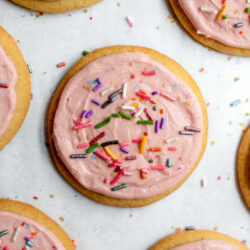
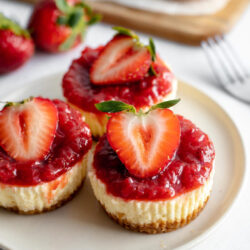
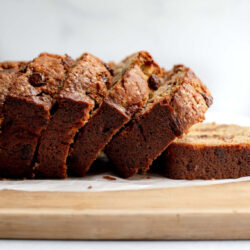
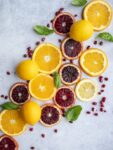
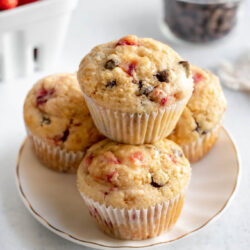
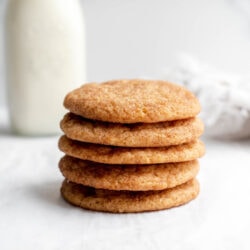
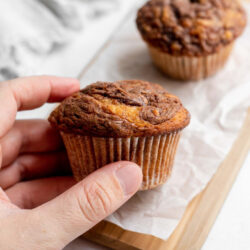
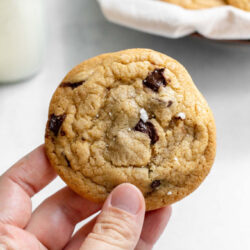
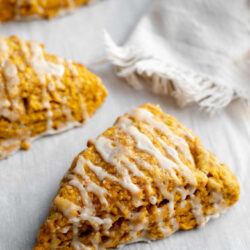
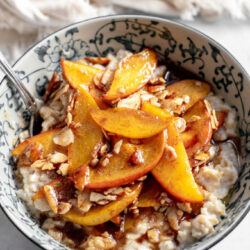
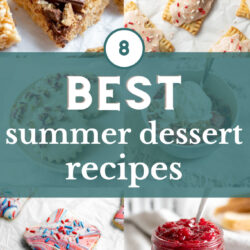
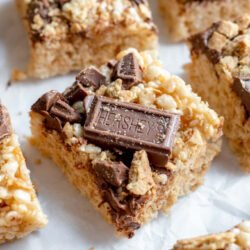
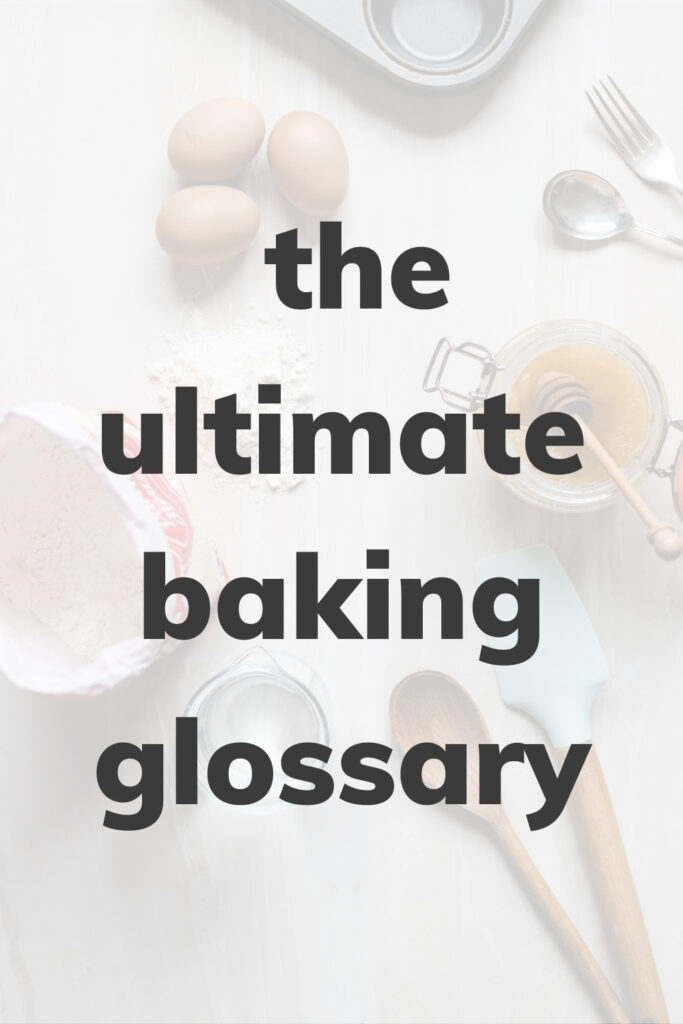
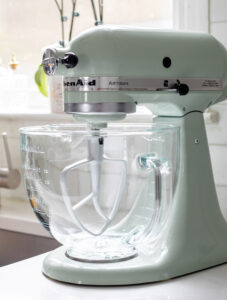
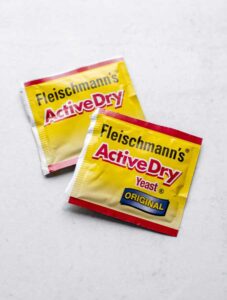
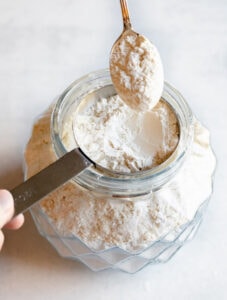
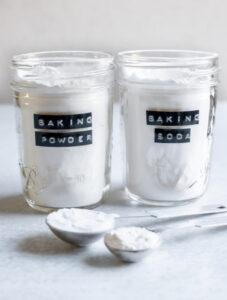


Love the explanation for imitation vanilla, definitely not suitable for baking! That stuff is gross, real vanilla all the way!
I completely agree! 🙌🏻